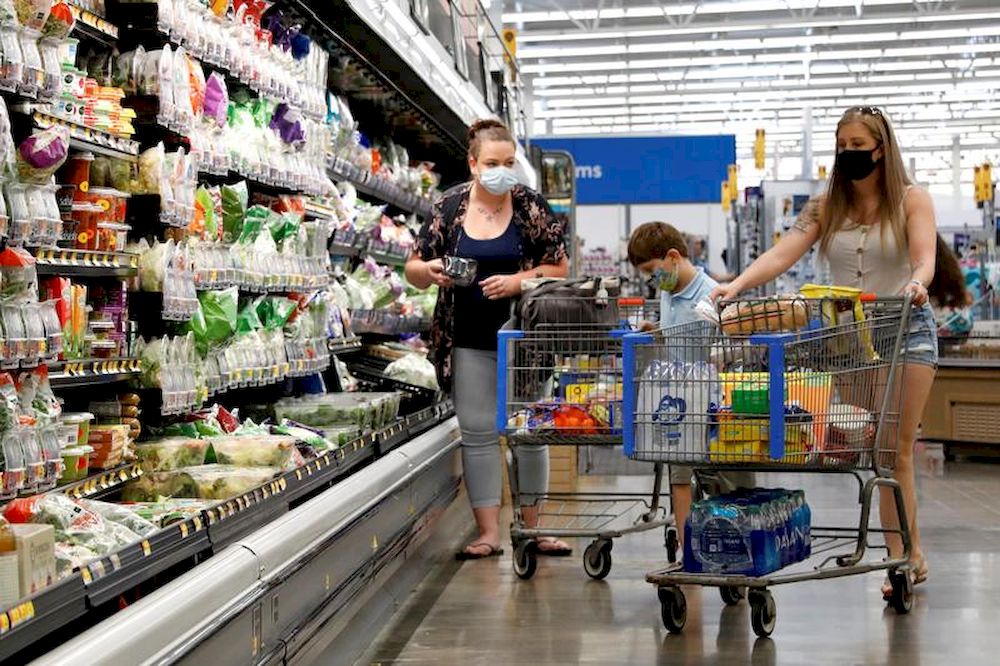LONDON, July 2 ― The closure of retail stores during the various Covid-19 lockdowns forced the public to turn to online shopping. But what's going on now, as life gradually returns to normal? While the hybrid ― or phygital ― shopping experience has many more followers today, consumers don't seem ready to turn their backs on their favorite bricks-and-mortar stores. On the contrary, it seems that many of them actually want to go back to shopping real-world stores.
Right now, everyone seems to be talking about the digital experience, largely seen as the future of shopping. But what do consumers really think? Since retail stores reopened, consumers actually appear to be very happy to rediscover the experiences ― touching, trying on, social interactions ― that they missed during the various lockdowns. This doesn't mean that they're giving up shopping online, but that they now count on enjoying the best of both worlds.
No less than 80 per cent of consumers around the world (United States, France, United Kingdom, China) say they “feel comfortable” visiting physical stores now, according to a report released by the Mood Media agency*. And while they're still worried about catching Covid-19 from visiting stores (48 per cent) ― Chinese consumers being the most concerned (50 per cent) ― a majority of consumers say that shopping in physical stores feels good (54 per cent). Consumers in the US are most at ease with the idea of returning to stores (86 per cent). Shoppers in the UK are more confident than in 2020 (just 62 per cent), but still remain the least confident (76 per cent).
Getting back to normal
For now, consumer shopping habits have not yet returned to how they were before the pandemic, but there's every indication things are changing, and in a positive sense. Nearly two-thirds of global shoppers say they still don't visit stores as often as they did before covid, but nearly three in 10 (29 per cent) say that they spend more per visit. Note that almost half the consumers polled (46 per cent) say they spend “more or less the same” as before.
However, six out of ten consumers around the world already say that they expect their shopping habits to return to normal by the end of 2021, and one in five even consider that this is already the case. Still, some seem more optimistic than others. American men are the most optimistic, believing that their purchasing habits will return to pre-pandemic levels by the end of this year (74 per cent). This is not the case in the UK, however, where 14 per cent believe that their habits will never return to how they were before the pandemic.
Touching products and social interactions
The ability to touch, feel and try products is what consumers around the world found they couldn't replace and missed the most when stores were closed (45 per cent). It's also the top factor driving shoppers to physical stores rather than online (59 per cent). The report notes that the social aspect of shopping, which can be enjoyed with friends, is another of the irreplaceable aspects consumers missed (35 per cent), as well as being able to take purchases home right away (35 per cent).
Globally, shoppers especially regretted not being able to visit malls (38 per cent) and fashion stores (36 per cent) during the pandemic. The French (46 per cent) and the British (30 per cent) particularly missed fashion stores, while American consumers above all missed not being able to go to shopping malls (40 per cent) and grocery stores (30 per cent).
However, consumers do intend to take advantage of the services made available to them when stores closed, therefore enjoying the best of both physical and digital shopping. Click and Collect was particularly popular (33 per cent), as was curbside pickup (19 per cent), not to mention the QR codes placed on products seen in store and then purchased online (17 per cent), although opinions differ from country to country. ― ETX Studio
* The study was conducted by Censuswide for Mood Media, with 8,012 people surveyed in the UK, US, France and China between May 28 and June 1, 2021.






















